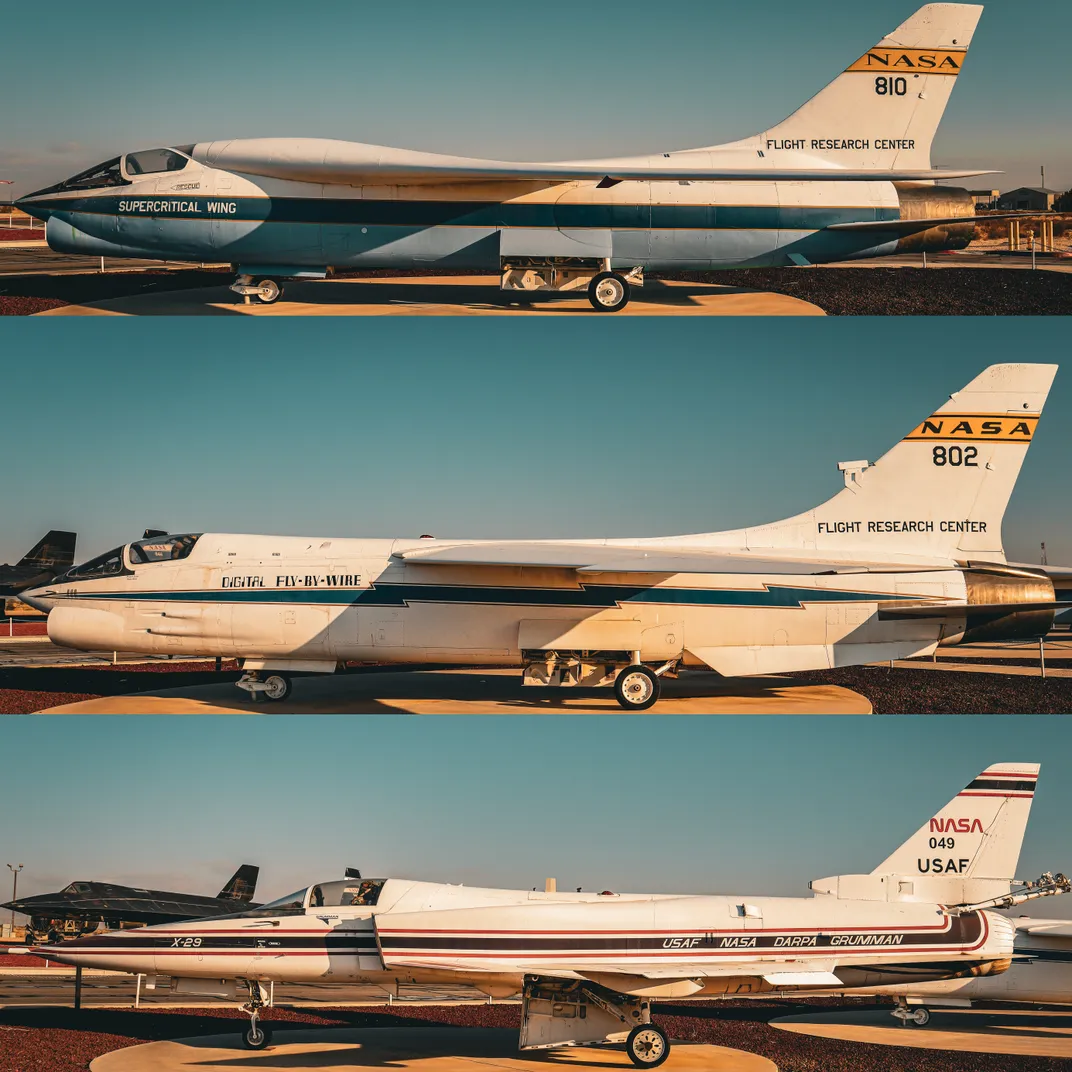From top to bottom: The F-8 Supercritical Wing, developed by NASA in the 1970s, represents an innovative aerodynamic design aimed at enhancing the fuel efficiency and performance of aircraft. Applied to a modified F-8 Crusader, this design features a flattened upper wing surface, effectively delaying shock wave formation and reducing drag, especially at transonic speeds near the sound barrier. The goal was to improve aerodynamic efficiency in the challenging transonic flight regime. The F-8 Supercritical Wing's principles have since influenced the design of various commercial and military aircraft, contributing to advancements in aerodynamic performance across different speed regimes. Rockwell International built the new, composite wing for NASA. Because it lacked antiskid brakes or wing flaps, the modified F-8 could not land on Langley's runway so was flown only at Edwards. The F-8 Crusader Digital Fly-By-Wire (DFBW) , traditional control mechanisms were replaced with an electronic flight-control system linked to a digital computer. This computer translated pilot inputs into commands transmitted to electric motors for adjusting aerodynamic control surfaces. The fly-by-wire system proved lighter, more precise, and more efficient than its mechanical counterparts, eliminating the need for hydraulic systems. Featuring redundant paths for flight-control commands, the system increased safety. The initial phase utilized a guidance computer akin to those employed in Apollo moon missions, with limited but cutting-edge memory. In the project's second phase, the F-8 validated flight-control computers later adopted in space shuttles. The last F-8 DFBW flight occurred on April 2, 1985, marking a significant milestone in the evolution of aerospace technology and fly-by-wire systems. The last flight took place on April 2, 1985 The X-29 conventional control mechanisms were replaced with an electronic flight-control system connected to a digital computer. This computer interpreted pilot inputs and relayed commands to electric actuators, enabling precise adjustments of the aircraft's control surfaces. The use of fly-by-wire technology offered advantages such as reduced weight, enhanced precision in flight-control commands, and improved overall efficiency. Similar to the F-8 DFBW project, the X-29's fly-by-wire system featured redundancy for increased safety. This initiative contributed valuable insights into advanced flight control systems, influencing the evolution of aviation technology. Two X-29 aircraft were flown 422 times between 1984 and 1992.
| Date Taken: | 11.2023 |
| Date Uploaded: | 11.2023 |
| Photo Location: | Edwards AFB, Ca, United States of America |
| Copyright: | © Matthew Miller |

